We've already covered power and defense in a different article, so let's take the time now to go over the (keyword) abilities in the game so far, how good they are, and how much they are worth.
(Keyword) Abilities
Firstly, this section is probably going to be super obvious for the most of you so I'll breeze through this as fast as possible.
Soulguard. As I previously have said, Soulguard is about a quality decision. You are giving the option to double the longevity of certain monsters because those monsters are worth keeping on the field. Some monsters are not worth keeping on the field, even if they do have Soulguard. Because of that, Soulguard isn't just a +1, its something we call a quality +1. The quality changes based on the card, and could be worth more or less than an average +1.
 |
| Shun! Goku! Satsu! |
You want to have at least stats like Systemic Dagger "Onca". Size 2 magic power and Size 1 magic defense. Its call cost grants the Soulguard as a wash, but since it hits magic numbers all around this wash is a quality wash. As in it's worth it.
Penetrate. Penetrate's advantage gain takes effect when a monster attacks. If it attacks the center, the monster, instead of attacking for a +1 as usual, adds the its critical value to its attack. So if Armorknight Medusa attacks the center and gets through, her attack wasn't worth +1 but +2, negating your opponent's gain of placing a monster in the center, thus making it worth using her to clear the center as opposed to a spell. It's basically like gaining Double Attack if you're attacking the center.
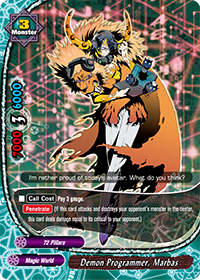 |
| myOpponent.destroy(); |
Free penetrate exists very readily. Paid penetrate is even more common, even accessible to Magic World. They make beautiful pressure columns, and even better situational calls to center just to gain easy damage. You can also link attack with them to get the same effect.
Double Attack. I've covered this in more than enough detail here. +1 per attack, based on crit as always. Tempest Enforcer has Triple Attack, which is just three times the pain.
Counterattack. If you can kill, +1. If not, then nothing happens. Usually this is bestowed by a spell, but Demongodol also has it (and puts it to rather poor use). The other monster is Hundred Face Ninja, Muraku. His uber-troll ability allows you to drop any monster (or weapon, actually) and gain all the stats of the said monster or weapon. So you can turn a 1000/1000 useless dummy into a gigantic monster just by dropping a Size 3. This is a much better use of Counterattack. He threatens the center column with an unknown defense and power level, making it very hard for your opponent to deal with him. Strictly speaking, the limit would be dropping Evil Sins, Shumokuzame and the Ninja counter to boost Muraku +10000/10000.
Move. A card that has move can be considered to be placed in the center, even if it's on the right. Mathematically speaking, Move is a +1 since calling a monster to the center gives you +1 in field advantage (and removing a monster in the center gets another +1 in field advantage). Strategically, however, Move is far better than a +1 because it allows a weapon to be used in conjunction with the Mover. Normally, when you have a weapon, you lose out on either the protection of the center or the extra swing of the weapon. With Move, you get both so strategically it's a +2. Note I said strategically since you don't actually get an extra attack, you simply get to perform both parts of a strategy that you normally could only perform half of. However, Move is actually costed at about 1 gauge so it's a very efficient ability. Basically, if you run weapons, have a weapons-based deck, or use certain spells that require a monster to be in a certain field location, Move allows you to do that and gain center field control at the same time.
Lifelink. People have been rightly saying that, since life and gauge are interchangeable, Lifelink 1 would be the same as on-call cost of 1 gauge. But there's a marked difference that I would like to point out. The on-call cost of 1 gauge must be paid out in full immediately and right there, but Lifelink 1's cost doesn't factor in until after the monster essentially does it's duty. Meaning you get the full usage out of the monster, then you pay for it.
That makes more sense, actually. Imagine if your boss paid you for just showing up to work, but then you never did any work. You still got paid, right? Technically you could just up and leave and if the police and the courts didn't exist, you would've gotten paid for free. Lifelink says no to this setup and the payment is dealt afterwards. Which means that you basically get a nice little loan from your monster and are borrowing from the future.
Did you know that Lifelink is a direct application of elementary economic theory? The idea is that you borrow from what you are expected to have, not what you currently have. That way you can stay one step ahead of the game and gain advantage from foresight. Lifelink works the same way, and is better than paying up-front because there's even the chance that you never have to pay. If that Galiazond manages to Double Attack kill your opponent, Lifelink 8 would be as if it didn't even exist. So, yes, Lifelink is equal to gauge cost, but the benefits of using Lifelink are far greater and Lifelink is a much fairer, better version of paying on-call.
Apparently Bushiroad knew this too, and Lifelink actually is costed just a bit more than a simple 1 gauge. 0.25 more. Doesn't make a world of difference, but it's nice to know that they at least noticed this.
Equipment Change. It's a wash. That's to be expected, but it basically means you can adapt your weapon to your strategy free of cost. Pretty cool, if you have the hand for it.
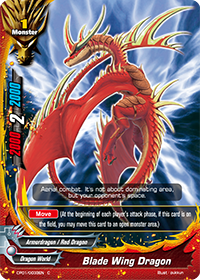 |
| Where you want, when you want it |
Lifelink. People have been rightly saying that, since life and gauge are interchangeable, Lifelink 1 would be the same as on-call cost of 1 gauge. But there's a marked difference that I would like to point out. The on-call cost of 1 gauge must be paid out in full immediately and right there, but Lifelink 1's cost doesn't factor in until after the monster essentially does it's duty. Meaning you get the full usage out of the monster, then you pay for it.
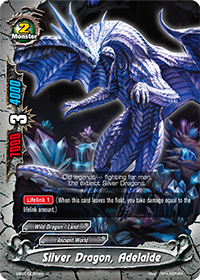 |
| #worth |
Did you know that Lifelink is a direct application of elementary economic theory? The idea is that you borrow from what you are expected to have, not what you currently have. That way you can stay one step ahead of the game and gain advantage from foresight. Lifelink works the same way, and is better than paying up-front because there's even the chance that you never have to pay. If that Galiazond manages to Double Attack kill your opponent, Lifelink 8 would be as if it didn't even exist. So, yes, Lifelink is equal to gauge cost, but the benefits of using Lifelink are far greater and Lifelink is a much fairer, better version of paying on-call.
Apparently Bushiroad knew this too, and Lifelink actually is costed just a bit more than a simple 1 gauge. 0.25 more. Doesn't make a world of difference, but it's nice to know that they at least noticed this.
Equipment Change. It's a wash. That's to be expected, but it basically means you can adapt your weapon to your strategy free of cost. Pretty cool, if you have the hand for it.
Direct Damage
Now that we're done with abilities, it's time to get started talking about direct damage.
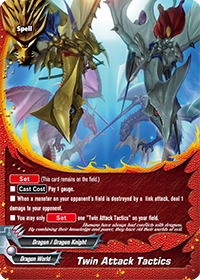 |
| The price of the poke |
So in order to create a hypothesis, I turn to Bushiroad's favoritism and bias for help. We all know that Bushiroad loves Dragon World. For Bushiroad so loved Dragon World, it bestowed upon the World 3 sets of shields, so that whosever chooseth them shall gain free advantage. We all know that Green and Blue shields grant a +0.5 as a side effect and become +0.5 overall when they guard a 2-crit attack. But White shield...is different. You use it to reduce the next damage you take by 2. There's no extra +0.5 side effect. That's it. Huh?
 |
| Is it the worst shield? |
Don't give me any BS about how White Dragon Shield is balanced since you can have a monster in your center. How often are you going to take damage with a monster in your center anyways? Your monster's probably dead, which is when they start attacking you. The only reason that condition is not in there is so White Dragon Shield can reduce the damage from Impacts and abilities that bypass the center monster.
Okay. Back to the point. You play White Dragon Shield from your hand (hand -1). You're going to reduce 2 direct damage, which leaves you at the end with a net +0.5. Thus, 2 direct damage is equated to 1.5 advantage points. Each point of direct damage is...0.75 of a card, or 1.5 gauge. Conversely, each card or equivalent in gauge/life should be able to deal about 4/3 direct damage (1.33). This is going to get ugly. Let's try to say this in a different way. Since 1 direct damage = 1.5 gauge = 1.5 life, that means that dealing 2 direct damage would be the same as healing 3 life, or at least they should be weighted the same.
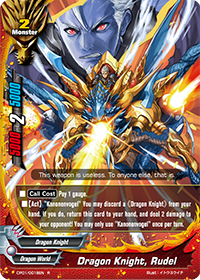 |
| I look like Dracula |
Super Armordragon, Galvanic Feather Dragon. He has a pretty sick ability by our standards that trades 2 gauge for 2 direct damage. You can only do it once per turn, but that's a +0.5 easily. On top of that, he has an on-attack effect of topgauging. It's not even on-hit; you're guaranteed to get a gauge out of this guy if he attacks (+0.5). So he has a surplus of +1 that needs to be somehow balanced...oh, look at that call cost. 2 gauge. How convenient. Except since his stats are freaking despicable for a Size 3, he's probably a lot weaker than he should be (calculations indicate about 1 crit or 1000/1000 weaker when compared to Phalanx). But he does show that the math is once again sound. Bushiroad indeed weighs direct damage heavier than life.
The FINAL card advantage equation: 1 card = 1 attack = 2 gauge = 2 life/damage = 6000 immediate power/defense = 4000 permanent power/defense = 1.33 direct damage
For those of you who want another perspective: 1.5 cards = 3 gauge = 3 life/damage = 90000 immediate power/defense = 6000 permanent power/defense = 2 direct damage
This means that a lot of my previous articles that mentioned cards that dealt direct damage are actually incorrect. I'm not going to go back and fix them, but cards like Victory Slash are actually a lot better than they appear to be.
Remember Bechstein and Stradivarius? Remember how I used to say that Bechstein paid for itself in 3 attacks and Stradivarius in 2? I lied. Since Bechstein's call cost is -1.5, and every tick of direct damage grants +.75, you pay for Bechstein in 2 turns, not 3. Stradivarius is even better, with a -2 call cost and a +1.25 ability on the turn it's played. If you were ever wondering if you should run these rods in your deck, I hope this convinces you that these sticks are an absolute terror.
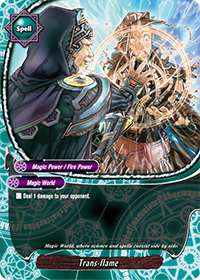 |
| *Poke. *Poke *poke. |
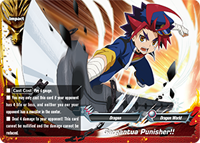 |
| GAME OVER |
My Final Words
All images used obtained from the official Bushiroad website and used here solely for reference purposes. Future Card Buddyfight!, logos, and respective content belong to Bushiroad. Large images belong to the Buddyfight! Wikia.


Ah, so I was right on how direct damage fit into the advantage scale. Cool. Looking forward to the World Analyses, Blaise!
ReplyDeleteYour blog helped me a lot. I revamped my deck based on your article and my new deck is working out even better. Anyways hope you continue your blog. I can help if you want. :D
ReplyDeleteDamn that Gargantua punisher... >_<
ReplyDeleteyou're forgetting tempo. You start the game with 6 cards and 3 gauge as you can always gauge and draw. If a full "fair" conversion rate happens you deal 10 direct dmg on your first turn, meaning you win on your fist turn and there's very little your opponent can do about it. Now this doesn't happen and that's mainly due to tempo. Whilst you many have all the resources in your hand to kill your opponent first turn, your output is bottlenecked rather serverly.
ReplyDeleteThe correct TCG term for what you are describing is "progression". Tempo is a good synonym though.
DeleteActually, many decks do have OTK potential in Buddyfight, especially when Gargantua Punisher was popular. This is because Buddyfight, like Yugioh, actually has fairly little progression and immediately starts the game in the midgame phase. As such, OTK's are a viable (though sacky) playstyle in both games.